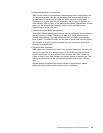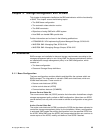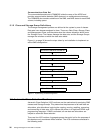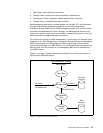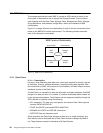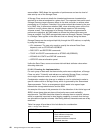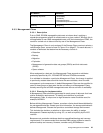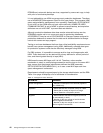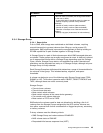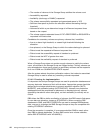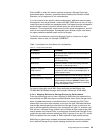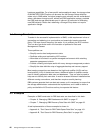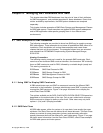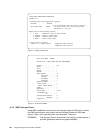
Storage Management with DFSMS 41
5.3.3 Management Class
5.3.3.1 Description
Prior to SMS, DFHSM managed the data sets at volume level, applying a
standard management criteria for all data sets on a given volume. Although this is
still applicable for non-SMS managed data sets, with the introduction of SMS, the
control is carried out at data set level by use of the Management Class.
The Management Class is only assigned if the Storage Class construct selects a
valid Storage Class, as can be seen in Figure 12 on page 37. For each data set, it
consists of attributes that determine the necessary control of:
• Retention
• Backup
•Migration
• Expiration
• Management of generation data set groups (GDGs) and their data sets
(GDSs)
• Space release
When assigned to a data set, the Management Class expands on attributes
previously specified by JCL, IDCAMS DEFINE and DFHSM commands.
If an attribute is altered on a particular Management Class, the change is applied
to previously created data sets which have the same attribute, when the next
management cycle commences. A default Management Class can be specified to
cater to those groups of data sets that do not belong to a Management Class,
thereby ensuring that all SMS managed data sets have a set level of availability.
5.3.3.2 Planning for Implementation
A Management Class should be generated for each group of data sets that have
similar availability requirements. To identify and reference a particular
Management Class, a unique one to eight character name should be used, for
example, MCDB21.
Before defining Management Classes, a number criteria should be established by
the storage administrator. Based upon this information, the storage administrator
defines Management Classes that provide a centralized storage environment.
This includes the decision on whether to allow users the ability to assign
Management Classes explicitly by using JCL, as well as implicitly by the ACS
routines.
Because most production database data has specialized backup and recovery
requirements, it is recommended that standard DB2 system utilities be used to
perform backup and recovery. However, consider using DFSMSdss or
Availability objectives - Accessibility
- Availability
- Guaranteed space
- Guaranteed synchronous write
Caching - Weighting
ATTRIBUTE COMMENT



